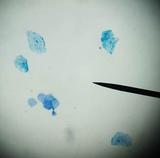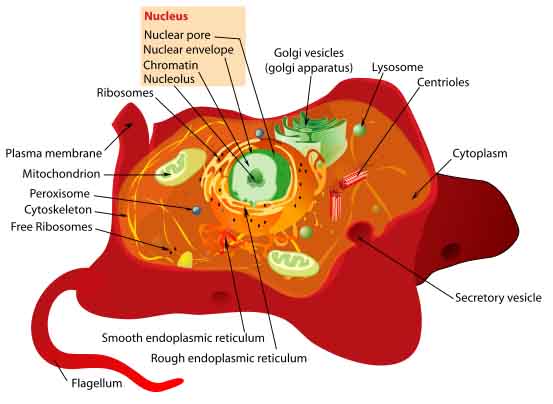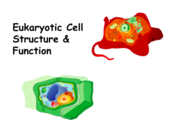 | ||||
Eukaryotic Cell
Parts, Functions & Diagrams
Although there are differences among eukaryotes (creature that range from amoebae to elephant), overall, eukaryotic cells share many characteristics.
Here's a breakdown.
Article Summary: Animals, plants, fungi, protists, algae, and water & slime molds are eukaryotes, organisms composed of one or more nucleated cells. Here are the basics.
Eukaryotic Cell Structures, Functions & Diagrams
SPO VIRTUAL CLASSROOMS
 | ||||||
SPO VIDEO: How to Make a Wet Mount of Stained Epithelial Cheek Cells
Eukaryotic Cell Envelope & External Structures
- Cell Wall: The cells of plants, algae and fungi have thick, protective cell walls, which provide support, help maintain the shape of the cell, and prevent the cell from taking in too much fresh water and bursting.
- Plasma Membrane: All cells, both prokaryotic and eukaryotic, have a plasma membrane, made mainly of phospholipids and proteins, which functions as a barrier, regulating the movement of materials between the inside and the outside of the cell.
Illustration of a generic eukaryotic animal cell. Click here for a practice assignment on identifying the parts of an animal cell.
Page last updated: 3/2016
- Cilia & Flagella: These extensions of the cell are covered with plasma membrane and supported internally with a structural system of microtubules—kind of like a bone covered in skin.
Flagella (singular flagellum), which are longer than cilia, aid in cell movement. Cilia
(singular cilium), which are able to beat together in a coordinated manner, can also help direct materials around the outside of the cell.
Sperm cells have a flagellum to help them reach the eggs for fertilization.
 | ||||||
You have FREE access to a large collection of materials used in a college-level introductory biology course. The Virtual Biology Classroom provides a wide range of free educational resources including PowerPoint Lectures, Study Guides, Review Questions & Practice Test Questions.





